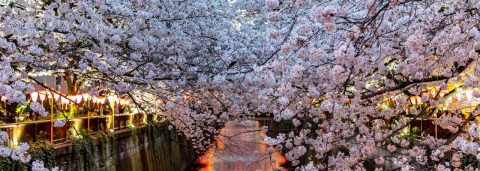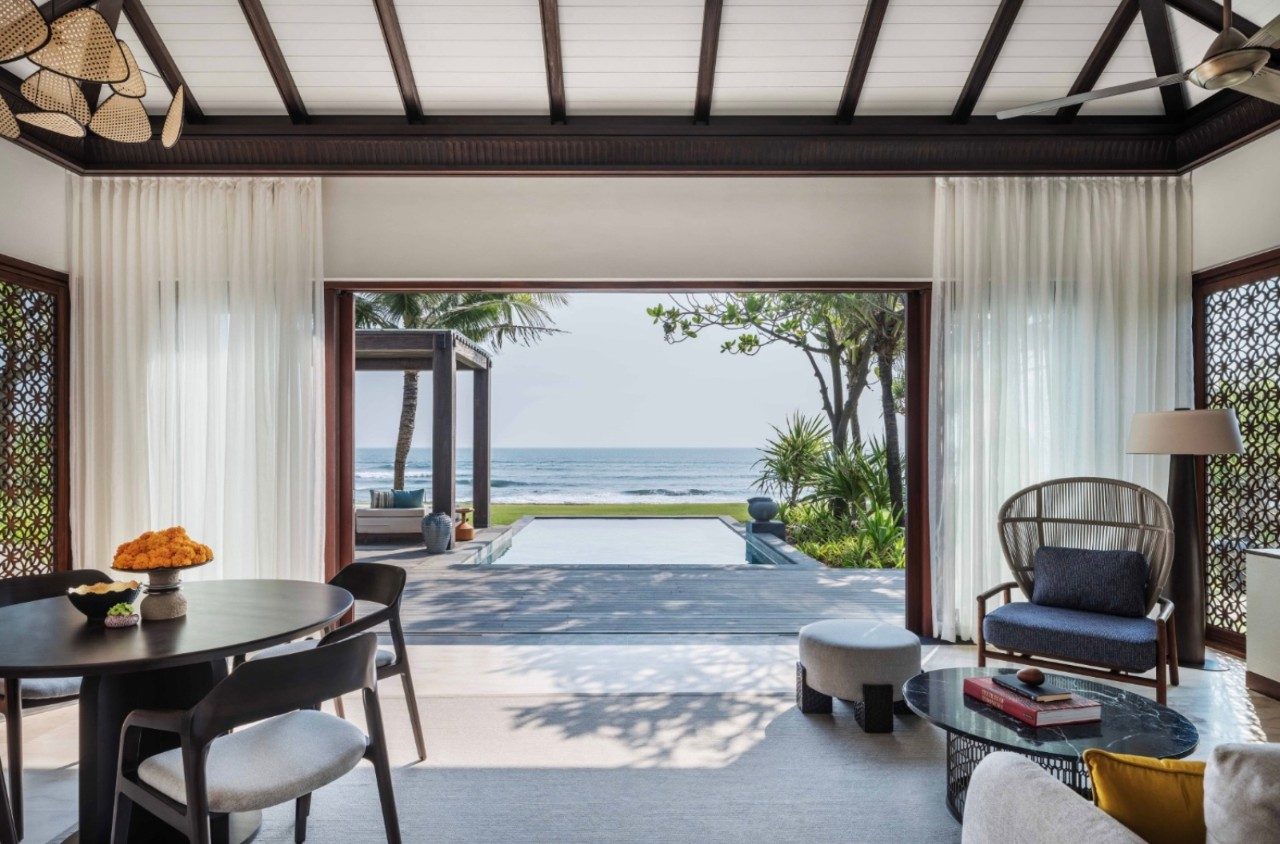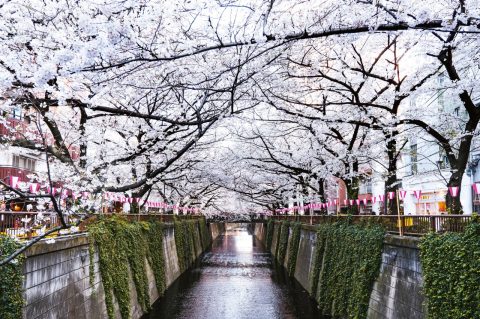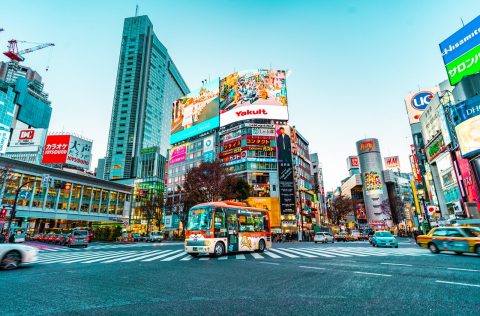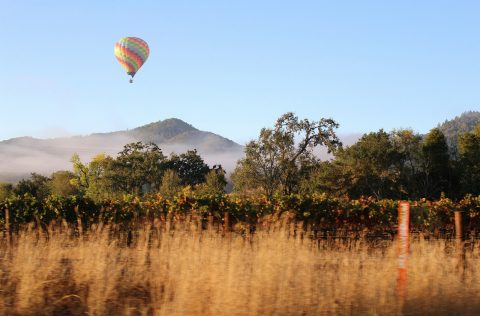10 Amazing Experiences to Have in Saga, Japan
Sandwiched between Fukuoka and Nagasaki on Japan’s southern island of Kyushu, Saga is best described through its colours: the elegant blue and white of Imari and Arita porcelain; the vivid pinks and reds of its blooming gardens; and the lush greens of its sprawling tea fields.
A small region with a big cultural impact, Saga offers an unforgettable off-the-beaten-path experience for visitors who are looking to venture beyond the hotspots of Tokyo, Kyoto and Osaka. Explore ancient settlements, majestic castles and soothing hot springs. Indulge in the rich flavours of Saga beef, savour the region’s famed saké and discover artisanal ceramics. It’s everything you’ve dreamed of for your next Japan adventure, all in one remarkable place.
Take in the commanding views from Karatsu Castle
1/11This elegant 17th-century castle on the northern end of Saga was rebuilt in the 1960s but retains much of its historical charm. Climb to the top of the five-storey keep for panoramic views over the city of Karatsu and the Genkai sea beyond. The citadel is surrounded by verdant gardens, and in spring, it appears to float on clouds of pink cherry blossoms. After exploring the interior, amble down the Ishigaki Walkway, a two-kilometre path that traces the castle’s outer stone walls through the old part of town.
Wander through the opulent Former Takatori Residence
2/11Just 10 minutes on foot from Karatsu Castle, the Former Takatori Residence was originally built for a coal magnate in 1905. No expense was spared, from the full-scale Noh theatre stage in the grand hall to the 72 hand-painted cedar door panels. For a change of pace, make your way to Hikiyama Exhibition Hall – about a 15-minute walk away – where the dramatic festival floats from the region’s autumn Karatsu Kunchi Festival are displayed year-round. The ornate lacquered lions, dragons, carp and samurai helmet floats each weigh two to three tonnes.
Discover the history of Japanese porcelain at the Kyushu Ceramic Museum
3/11Before exploring the ceramic shops and kilns of Saga, take some time to learn the story behind the world-famous wares. Porcelain production in Saga began more than 400 years ago with the discovery of porcelain stone in Arita. The Kyushu Ceramic Museum, located a short walk from Arita Station, showcases rare historical examples of Arita and Imari porcelain and offers interactive touch screens for deeper insights. With your newfound knowledge, visit Gallery Arita, a nearby ceramics shop and café, where you can enjoy a meal presented on contemporary Arita ware.
Discover the delights of Saga Prefecture on an 8-night Kyushu tour with DealsAway or a 6-night tour with HIS. Book now.
Learn traditional techniques at Gen-emon Kiln
4/11Gen-emon Kiln is one of Saga’s most famous kilns, having produced porcelain with intricate hand-painted patterns in vibrant colours for more than 260 years. Visit the workshop in the hills behind Arita Station to watch skilled artisans shape, paint and fire porcelain before buying pieces directly from the kiln. Just a short walk away is Arita Será, a retail complex dedicated to porcelain which houses Arita huis, a boutique hotel with a contemporary restaurant.
Admire the masterpiece that is Tozan Shrine
5/11Arita’s Tozan Shrine (also known as Sueyama Shrine) is unlike any other. Befitting the region’s ceramic heritage, many features of the shrine – including the torii gates, lanterns and guardian komainu lion-dogs – are crafted from blue and white porcelain. A short walk away is the Tonbai Walls area, a historic potters' neighbourhood where the walls are uniquely constructed from discarded kiln bricks and pottery shards. For a break, visit the chic and minimalist Arita Porcelain Lab café where the elegant meals are served on locally-made Arita ware.
Discover award-winning architecture at Takeo City Library
6/11While Takeo Onsen has soothed weary visitors for more than 1,300 years thanks to Tonosama-yu, a hot spring bath once reserved for Saga’s feudal lords, it’s also famous for its award-winning Takeo City Library, where approximately 250,000 books are arranged in a sweeping modern arc around an airy cafe. At nearby Takeo Shrine, the towering, 3,000-year-old camphor tree looks straight out of a Studio Ghibli film. The baths and library are also close to Takeo-Onsen Station, where you can taste Saga’s famous Wagyu beef at Kairodo – the tender sukiyaki bento box is a crowd-pleaser.
Immerse yourself in nature’s canvas at Mifuneyama Rakuen
7/11A short drive from Takeo Onsen station, this expansive garden at the foot of Mount Mifune was created in 1845 to be a living work of art. Each season transforms the garden, from vibrant blooms in spring and summer – which serve as a technicoloured backdrop for art festivals – to fiery autumn foliage and serene snowscapes in winter. Relax with a cup of matcha at the lakeside teahouse while taking in the view. Guests staying at Onyado Chikurintei or Mifuneyama Rakuen Hotel, both located within the grounds, enjoy complimentary access to the gardens.
Meet your matcha at Ureshino Onsen
8/11Renowned for its sodium bicarbonate and sodium chloride-rich waters, Ureshino Onsen is celebrated as one of Japan’s top hot springs for pampering your skin. Ureshino is also one of Japan’s oldest tea-producing regions, with hillsides cloaked in thriving green tea fields. Experience the heavenly combination of hot springs and green tea by soaking in a tea bath at Warakuen, a traditional hot spring inn that welcomes day visitors. Cool down afterwards at Music Bar Oomuraya, which houses a collection of some 3,000 vinyl records and offers a drinks menu featuring Ureshino-cha Beer – a matcha-infused green beer.
Step back in time at Yoshinogari Historical Park
9/11ew outside Japan are familiar with the Yayoi period, which began around the 4th century BC, when rice cultivation and bronze and iron production were introduced to the country. Yoshinogari Historical Park, located on the largest excavated Yayoi settlement, offers a fascinating glimpse into this era. A short walk from Yoshinogari-Koen Station, the park features meticulously recreated villages with pit dwellings, elevated storehouses, watchtowers and shrines. Visitors can immerse themselves in the past through hands-on activities such as stone carving and using a bow drill to make fire.
Sample ancient flavours on Kashima’s Saké Brewery Street
10/11The coastal city of Kashima has been renowned for producing high-quality saké since the Edo period. Sakagura-dori (Saké Brewery Street) is home to three breweries – Minematsu Shuzo, Fukuchiyo Shuzo and Mitsutake Shuzo – housed in traditional white-walled buildings. At Minematsu Shuzo, you can tour the brewery and sample its signature sakes, as well as those from Mitsutake Shuzo. Seasonal saké festivals in spring and autumn draw both experts and enthusiasts from across the globe. Nearby, Yutoku Inari Shrine captivates visitors with its vivid vermillion structures, tunnel of torii gates and vibrant azaleas in spring.
Discover the delights of Saga Prefecture on an 8-night Kyushu tour with DealsAway or a 6-night tour with HIS. Book now.
